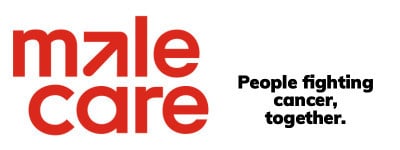A personal history of prostate cancer and its treatment
Diagnosis
In January 2003, Ian was diagnosed with prostate cancer. He was then 66.
This diagnosis came about fortuitously. Ian had had a haemorrhoid operation in June 2002, which was followed by a mild infection. A blood test in July showed a raised PSA (although the GP’s DRE appeared OK). The PSA was still raised after treatment with antibiotics, and our GP then referred Ian to the urology department at the local general hospital. By the time of his appointment, in November 2002, his PSA was 35. A biopsy in January 2003 showed prostate cancer with Gleason 8 (4+4). In February, Ian had an MRI scan and bone scan, which showed the tumour to be out of the prostate but with no apparent spread to the lymph glands or pelvic bones (clinical stage T3a). By this time, his PSA was 45.
Treatment
As is normal in the UK, the clinicians involved (urologist, oncologist, radiologist) held a case conference and decided that Ian’s case was best handled by the oncologist. Ian started on Zoladex (3-monthly injections) immediately, with an initial three weeks of Casodex to control tumour flare. We asked for a second opinion in order to investigate all our options, and were referred to the Royal Marsden, the leading cancer hospital in the UK. Meanwhile, Ian had a CT scan which showed no sign of bone mets. By the time of our visit to the Royal Marsden in March, we had lots of questions which were very competently answered. Brachytherapy and prostatectomy were not considered viable options because the cancer was out of the prostate.
The only other possibility (in addition to the hormone therapy) was radiotherapy. At the local general hospital, this would have been given to the prostate only, but the Royal Marsden was conducting a clinical trial for which Ian was eligible. This gave radiation (using IMRT) to both the prostate (70 Gy over 7 weeks at 2Gy per day) and the pelvic lymph nodes (60 Gy over the same period). The consultant said that “80% of patients won’t benefit from radiotherapy, the remaining 20% could benefit enormously”.
After considerable research and thought, we decided that Ian should take part in the clinical trial. We felt that the risks of bad side effects were small (2-3%), and, although radiotherapy might ultimately make no difference, there was some chance that it would provide a major benefit. Ian was therefore booked to begin radiotherapy in January 2004. Meanwhile, his PSA dropped to 0.7 in September but had risen to 1.1 by December, suggesting that the cancer had begun to spread. He also had a bone scan in July which showed that his bone density was lower than it should be (due to the Zoladex), and he began taking Fosomax.
The seven weeks of radiotherapy were not as bad as we had feared. It took us about an hour and a half to travel to the hospital each day, and typically an hour or so there – the treatment itself took about 15 minutes. Side effects were surprisingly few, the main ones being loose bowels (controlled by Fybogel and Ibuprofen) and occasional difficulty in urination (controlled by Flomax). Ian’s main problem was in getting his bladder full enough (but not too full) before the radiotherapy, as waiting time at the hospital before treatment could vary considerably. He also became very tired towards the end of the seven weeks.
Result
The amount of follow-up by the hospital is one major advantage of being on a clinical trial. Ian finished the radiotherapy at the end of February and had four follow-up visits in the next three months. These are still continuing every six months. By December 2004, his PSA had dropped to undetectable. It has remained there since then (the most recent check was in December 2005). He had his last Zoladex injection (a monthly one) in September, and is gradually (but very slowly) recovering from the side effects of hormone therapy. The hot flushes have greatly reduced in severity, although muscle strength and endurance are still very poor. Testosterone in December was still undetectable but there are signs of this recovering.
The next follow-up visit is in June 2006. Ian’s PSA will probably have risen by then, but a PSA of 0.5 to 1 will be considered normal. If it reaches 2, then we and the hospital will have to consider further treatment.
Ian is reluctant to go to any support groups and has told very few people about his cancer. He has told his sons, with the result that they have been having regular PSA tests. His oldest son, now 46, was diagnosed with prostate cancer a few months ago, very early (with the cancer still in the capsule), and has chosen to have a prostatectomy.
Throughout this saga, we have found the internet an amazing resource, in providing both information and support. We might not have made the same choices nor had such a good result (so far!) without it.
Ian’s wife
